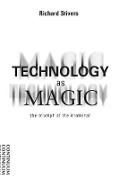Ulteriori informazioni
What gives the mass media, particularly advertising and television, their extraordinary power over our lives, so that even the most jaded and sophisticated among us are troubled and fascinated by their allure? The secret, according to Richard Stivers, in this brilliant new book, lies in the curious relationship between technology and magic. Stivers argues the two are now related to one another in such a way that each has taken on important characteristics of the other. His contention is that our expectations for technology have become magical to the point that they have generated a multitude of imitation technologies that function as magical practices. These imitation technologies flourish in the fields of psychology, management administration, and the mass media, and their paramount purpose in human adjustment and control. Advertising and television programs, in particular, contain the key magical rituals of our civilization.In a fascinating analysis of television programming, Stivers shows how various genres--news, sports, game shows, soap operas, sitcoms, etc.--have their distinct mythological symbols. Through dramatized information, they symbolically connect consumer goods and services to desired outcomes--the utopian goals of success, happiness, and health--thus enveloping technology, both real and imitation, in a magical cocoon.
Info autore
Peter M.R. Stirk is Senior Lecturer and Director of the Centre for the History of Political Thought at Durham University, UK. His previous books include
Max Horkheimer: A New Interpretation (1992) and, as co-editor,
An Introduction to Political Ideas (Pinter, 1995).
Riassunto
Stivers argues that our expectations of technology in society have led to the generation of a multitude of imitation technologies that function as magical practices once did.

